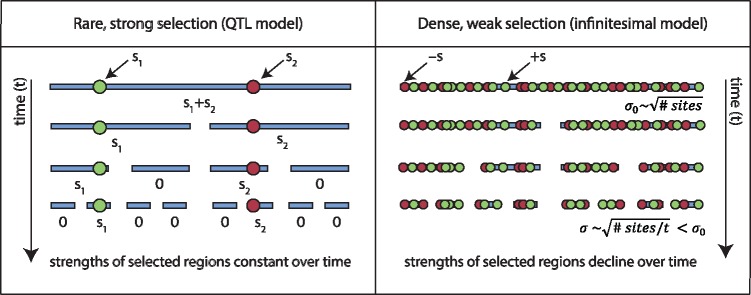Fig. 8.
Schematic demonstrating the selective effects of individual haplotypes in the strong-selection and dense weak-selection regimes. In the strong-selection case, we show two mutations of selective effects s1 and s2 that are initially linked, but are quickly decoupled by recombination. Over time, the typical size of the haplotype on which each mutation is found gets shorter, but the fitness effect of the selected region stays constant. In contrast, in the dense weak-selection regime, an initial haplotype has many mutations with selective effects ±s. The central limit theorem implies that the typical fitness σ0 of this haplotype is proportional to , where n is the number of mutations on the haplotype. Over time, haplotypes get smaller and n decreases, so the typical selection pressure σ of a haplotype declines. As a result, the rate of change in allele frequencies will decline over time.

